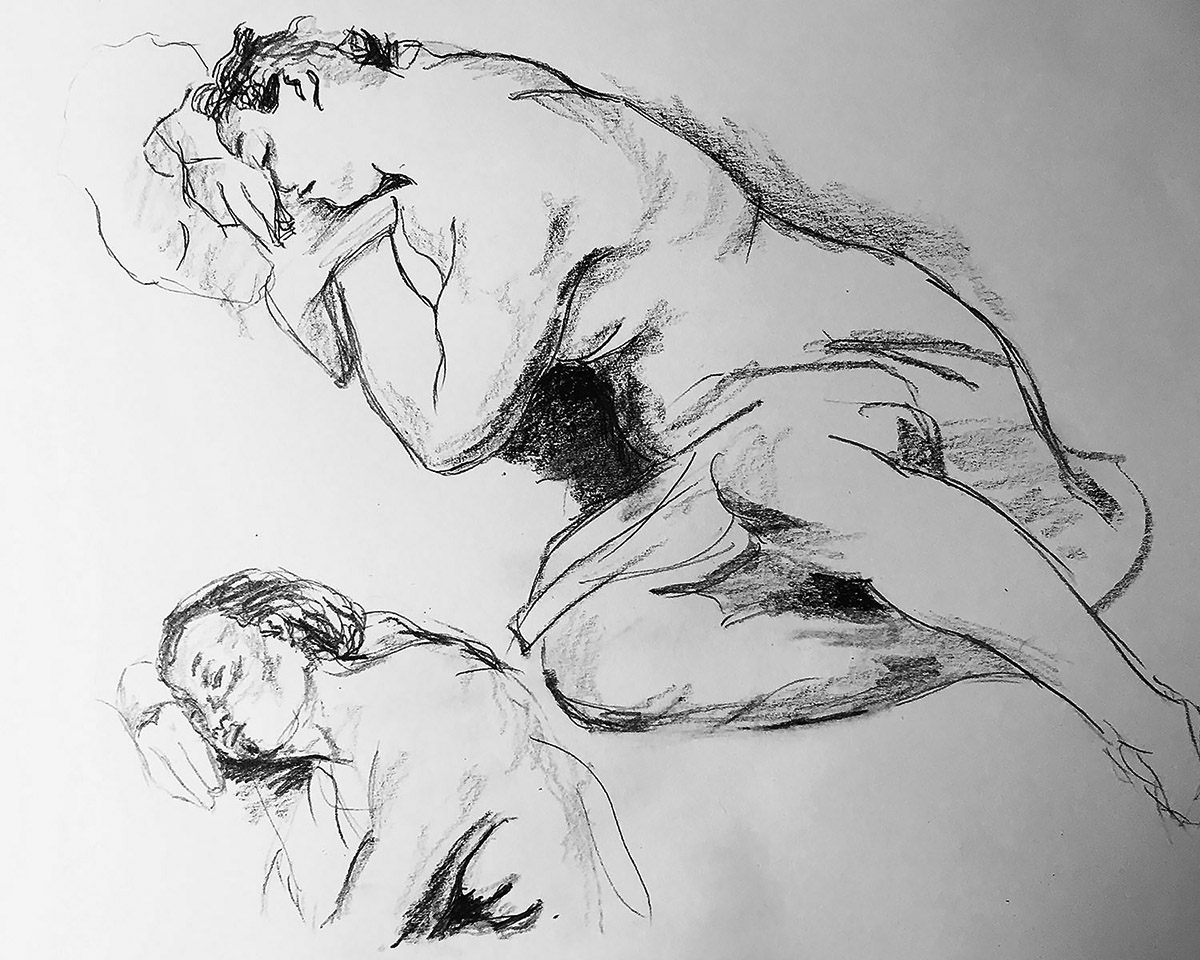
Up next on our master copying adventure, we have a graphite drawing of a woman sleeping copied from a work by Anthony Van Dyke or if you want to be more formal, Sir Anthony Van Dyke. Of course, if people have a choice they usually like to be less formal. That is why sweatpants are so popular. Let’s get back to Anthony Van Dyke. If you would like to see the original drawing of a woman sleeping by Sir Anthony Van Dyke, click here. Now let’s talk about Van Dyke. According to the Britannica website, which was the encyclopedia Britannica, which was a set of large books that occupied a lot of shelf space and included lots of information on a wide variety of topics. Yet somehow never included enough information on one topic to write an entire school report. Now let’s talk about Sir Anthony Van Dyke. He was born in 1599 in Antwerp which is now Belgium. He is second only to Peter Paul Rubens, as the most important Flemish painter of the 1600s. Van Dyke is best known for his portrait paintings of the aristocracy but he also created mythological and religious work. He was the 7th of 12 children and displayed all the common characteristics of a 7th child. His father was a successful silk salesman. He started a painting apprenticeship at the age of ten. His approach to applying paint was relatively simple for the time. He applied thin coats of blue, gray, pink, ochre and sienna. This gave his work a soft and harmonious look. There are 500 portraits created by Van Dyke still in existence, which is an incredible output considering he only lived to the age of 42. He greatly influence younger Flemish artists, perhaps even more than Peter Paul Rubens. English portrait painters such as Thomas Gainsborough in the 18th century also borrowed heavily from his work. Scholars not only continue to study his portrait paintings but also his drawings, watercolors and etchings of landscapes and other various subjects.
